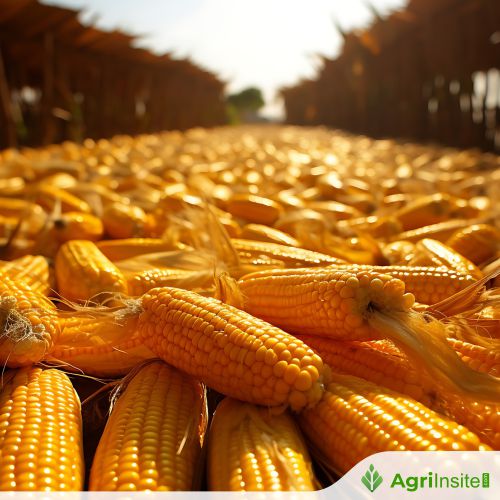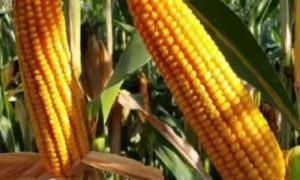Brazil’s Corn Delays Create a Golden Window for U.S. Grain Exporters

Brazil’s 2025 corn harvest may hit 101 million tonnes, but delays and rising domestic demand—driven by ethanol mandates and livestock growth—limit exports. This opens a window for U.S. grain exporters to fill global gaps. Investors can benefit by focusing on U.S. agribusiness stocks, grain-linked ETFs, and corn futures, as the global grain market shifts in their favor.
The 2025 Brazilian corn harvest is shaping up to be a tale of two dynamics: record yields juxtaposed with logistical chaos, creating a rare opportunity for U.S. exporters to capitalize on global supply gaps. While Brazil’s National Supply Company (Conab) projects a second-crop (safrinha) harvest of 101 million tonnes—the second-largest on record—delays in harvesting and surging domestic demand are reshaping global grain markets. For investors, this presents a compelling case to position for U.S. agribusiness equities and grain-related assets.
The Supply-Side Story: Record Yields, Delayed Harvest
Brazil’s safrinha corn, which accounts for 78% of total corn production, is set to hit 101 million tonnes, a 12.2% increase from 2024. This growth stems from favorable April-May rains and expanded planting in the Center-West region (60% of safrinha output). However, the harvest is lagging: just 20% complete by late June, versus the typical 50% pace by early July. Persistent moisture in June has clogged logistics, leaving fields waterlogged and farmers scrambling to dry corn.
The delay has triggered a sharp price drop in Brazil—falling to $3/bushel in Mato Grosso by June, down from $5.30 in March—due to oversupply from the delayed but abundant harvest. While this might seem advantageous for global buyers, the timing mismatch creates a critical gap for U.S. exporters.
Domestic Demand Pressures: Ethanol and Livestock
Brazil’s corn is increasingly consumed domestically, with two key drivers:
1. Ethanol Mandate Expansion: A 30% ethanol blend mandate, effective August 2025, will divert an additional 10–15 million tonnes of corn annually to fuel production. This follows a decade-long rise in ethanol use, which already consumes 26.5 million tonnes annually.
2. Livestock Growth: Brazil’s poultry and beef industries, expanding to meet global protein demand, now consume 40% of domestic corn.
These trends are tightening Brazil’s corn stocks-to-use ratio to a record 2%, leaving little surplus for exports. Conab estimates 2025 exports could drop by 9%, even as global demand for grains remains robust.
Export Dynamics: U.S. Corn’s Competitive Edge
Brazil’s delayed harvest and domestic demand surge are creating a golden window for U.S. exporters. Key advantages include:
– Price Competitiveness: U.S. corn trades at $5.50/bushel, higher than Brazil’s $3/bushel, but the gap is narrowing as logistics delays inflate Brazilian costs.
– Timeliness: U.S. farmers, with earlier harvest cycles, can fill gaps in Asian and Middle Eastern markets during Brazil’s delayed shipment period.
– Policy Tailwinds: U.S. ethanol exports to Brazil, driven by its new mandate, could further boost grain demand.
Investment Opportunities: Positioning for the Shift
Investors should consider three avenues:
1. U.S. Agribusiness Stocks: Companies like Deere (DE) (equipment for timely harvests), Corteva (CTVA) (seed tech for yield optimization), and Bunge (BG) (logistics for export) stand to benefit.
2. Grain-Linked ETFs: The Invesco DB Agriculture Fund (PBH) and iShares Global Agriculture Fund (MOO) offer diversified exposure.
3. Corn Futures: Direct exposure via CBOT corn futures could profit from global supply imbalances.
Risks and Considerations
- Weather: Brazil’s delayed harvest could worsen if rains persist, damaging yields.
- Policy Shifts: Brazil’s potential reinstatement of export taxes (12% in 2023) could disrupt trade flows.
- Global Demand: China’s import decisions and Black Sea supply dynamics remain critical variables.
Conclusion
Brazil’s corn abundance is a double-edged sword: it depresses prices domestically but constrains exports due to logistics and rising consumption. This sets the stage for U.S. farmers and agribusinesses to step into global supply gaps. Investors should leverage this structural shift by overweighting grain-related equities and commodities. The next few months will reveal whether Brazil’s delays become a lasting advantage—or a fleeting opportunity—for U.S. grain exporters.
Act now, but think long-term: The global grain market is undergoing a seismic shift, and U.S. agribusiness is positioned to lead the way.
To Read more about Maize News continue reading Agriinsite.com
Source : AI Invest















